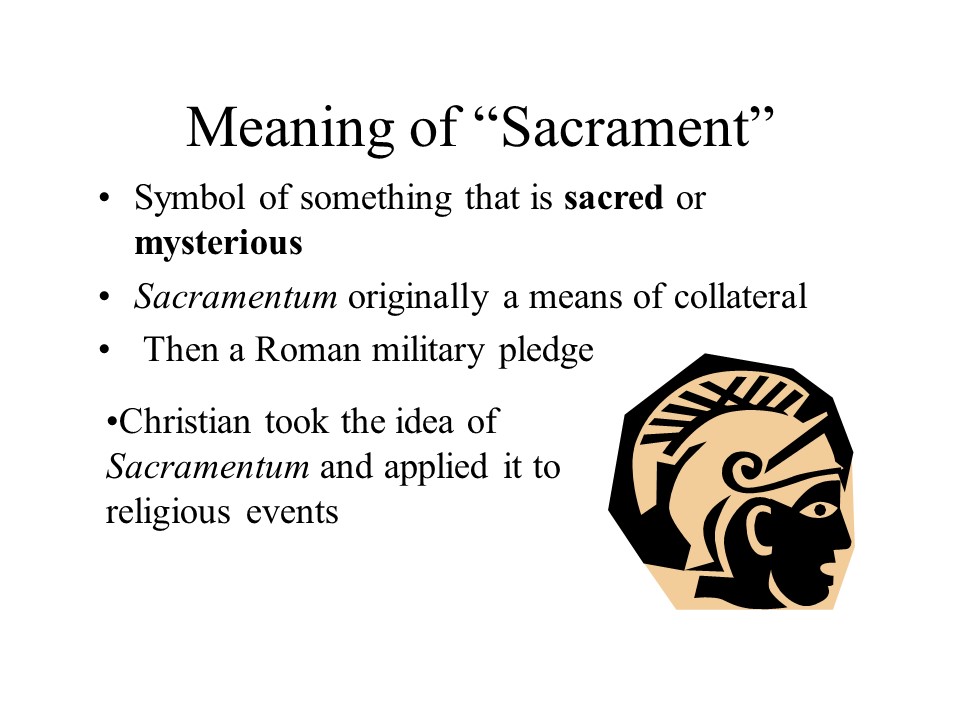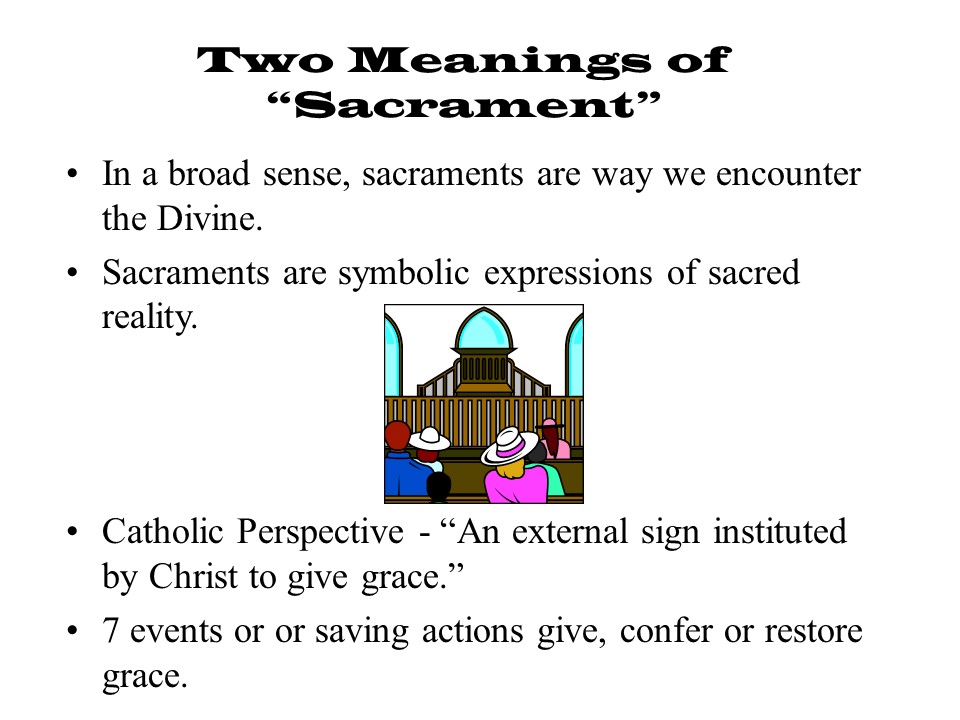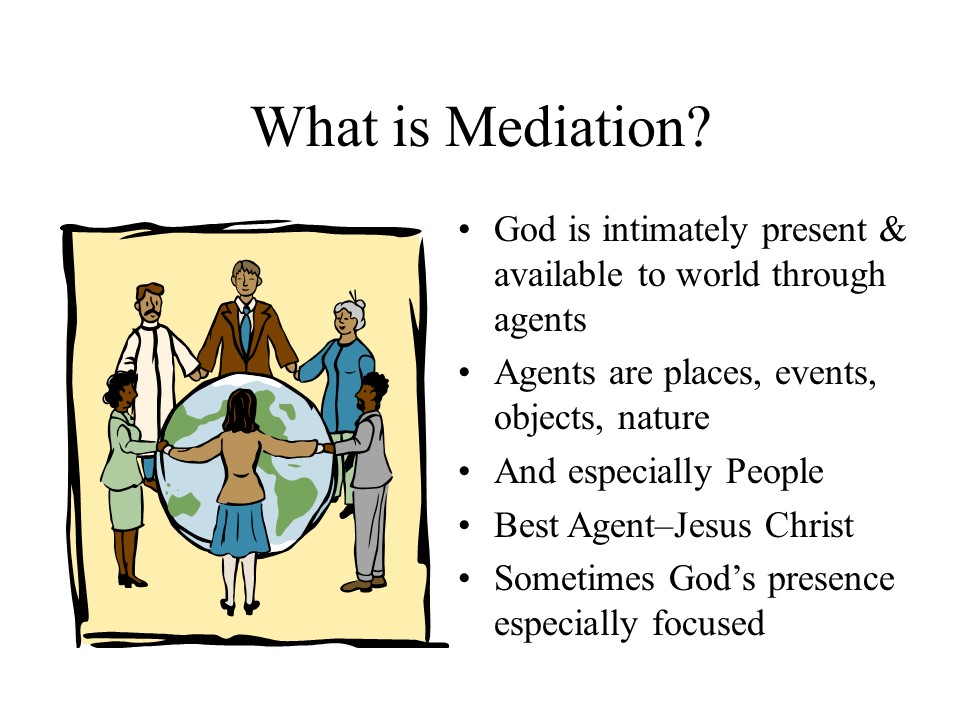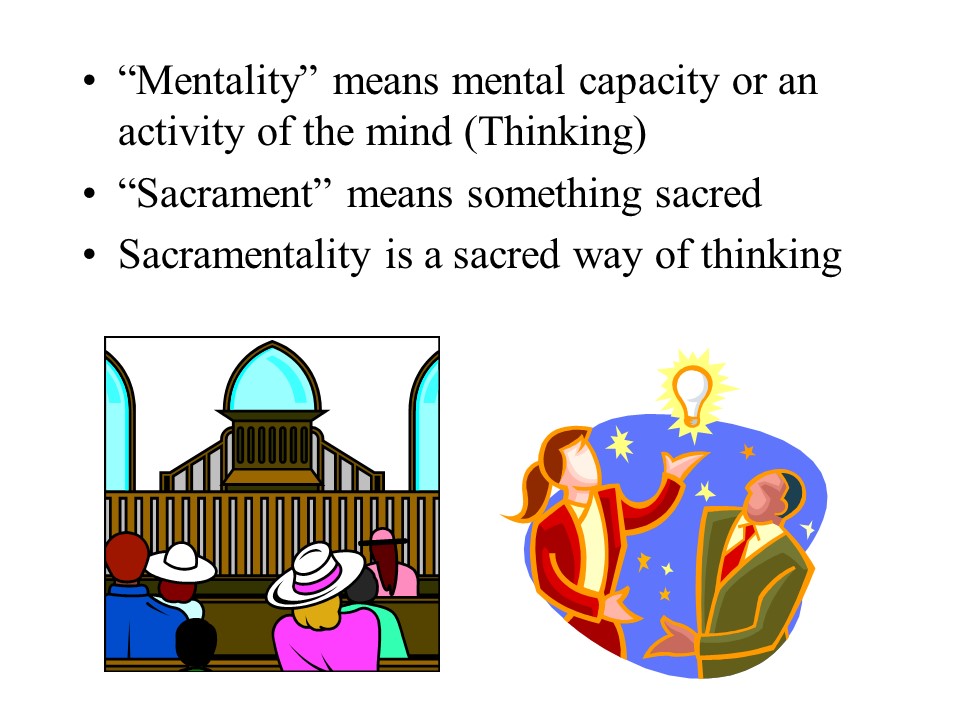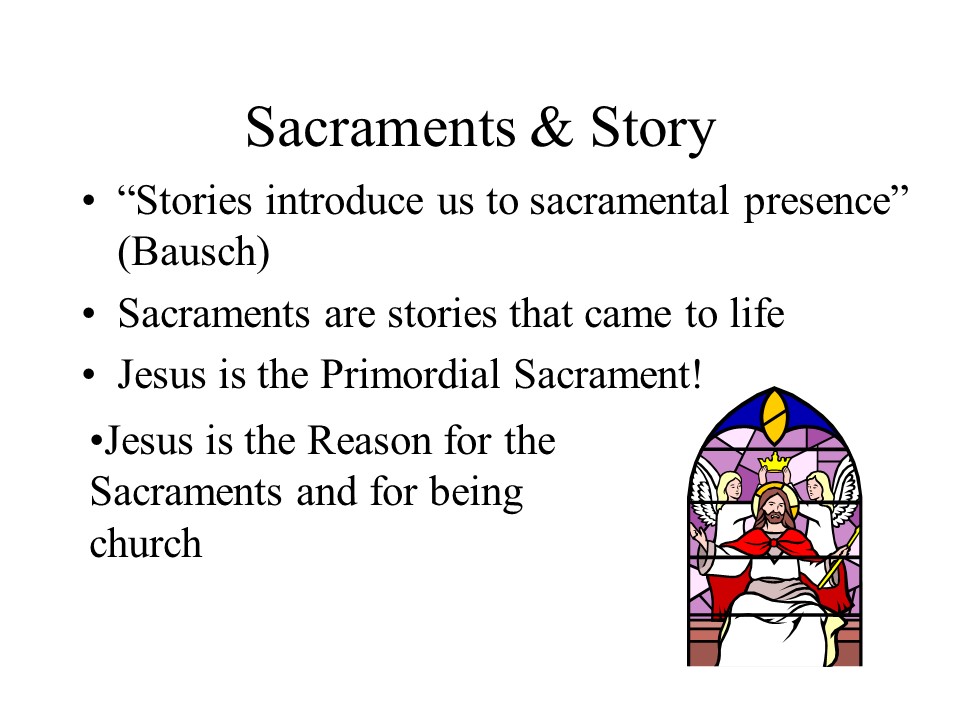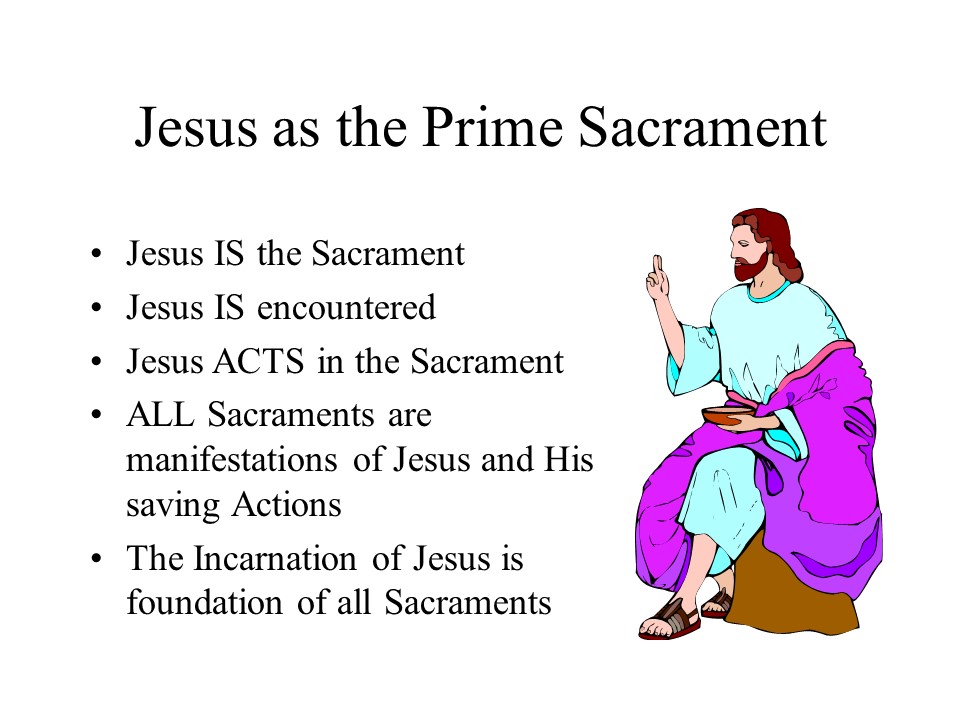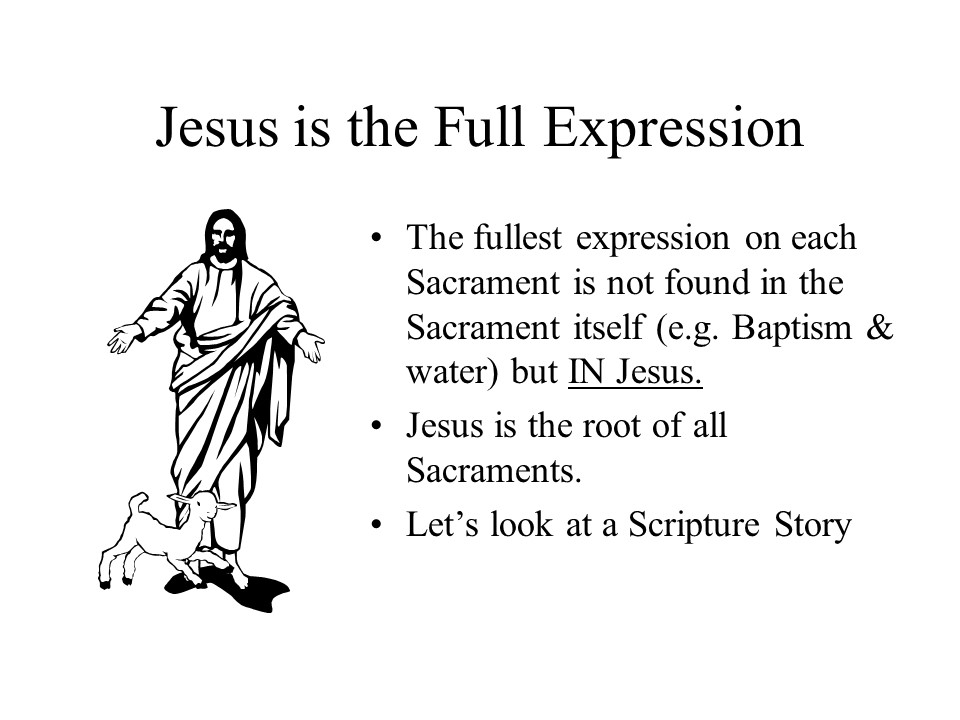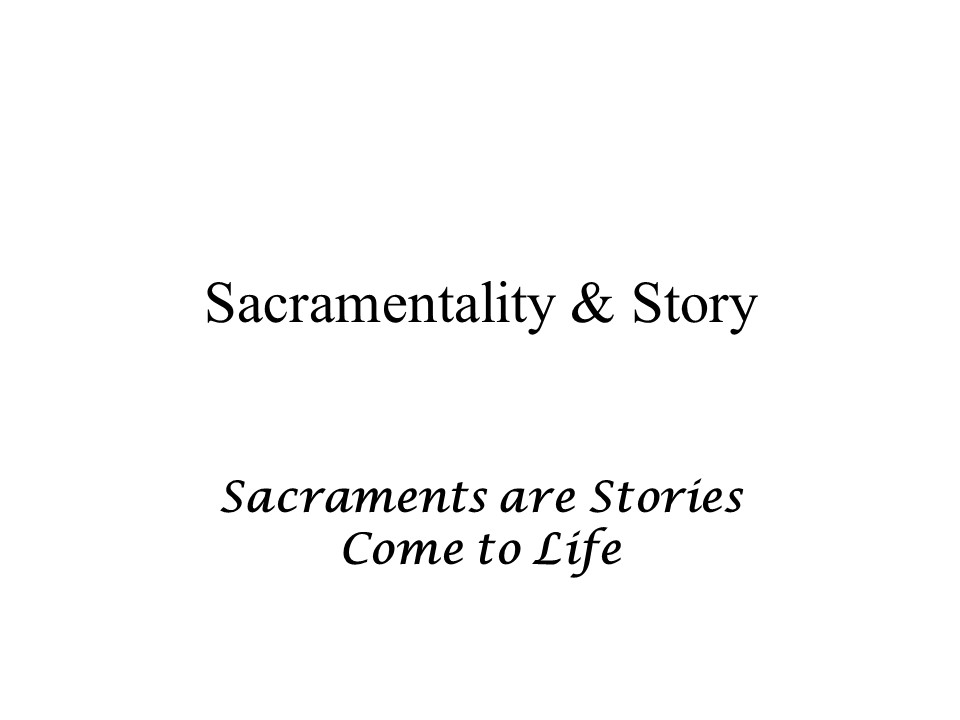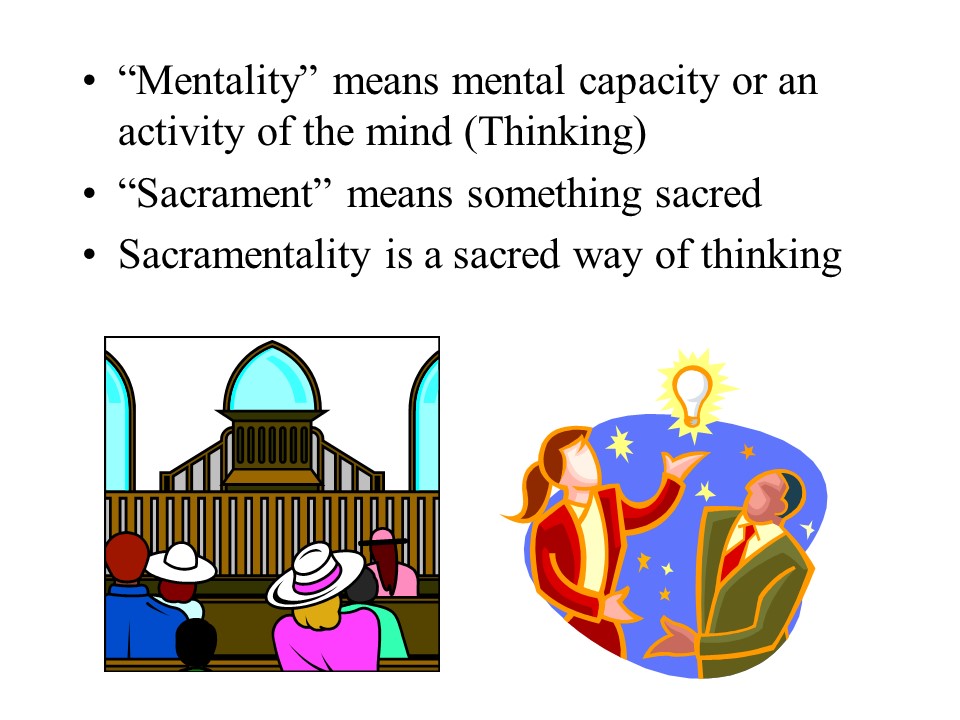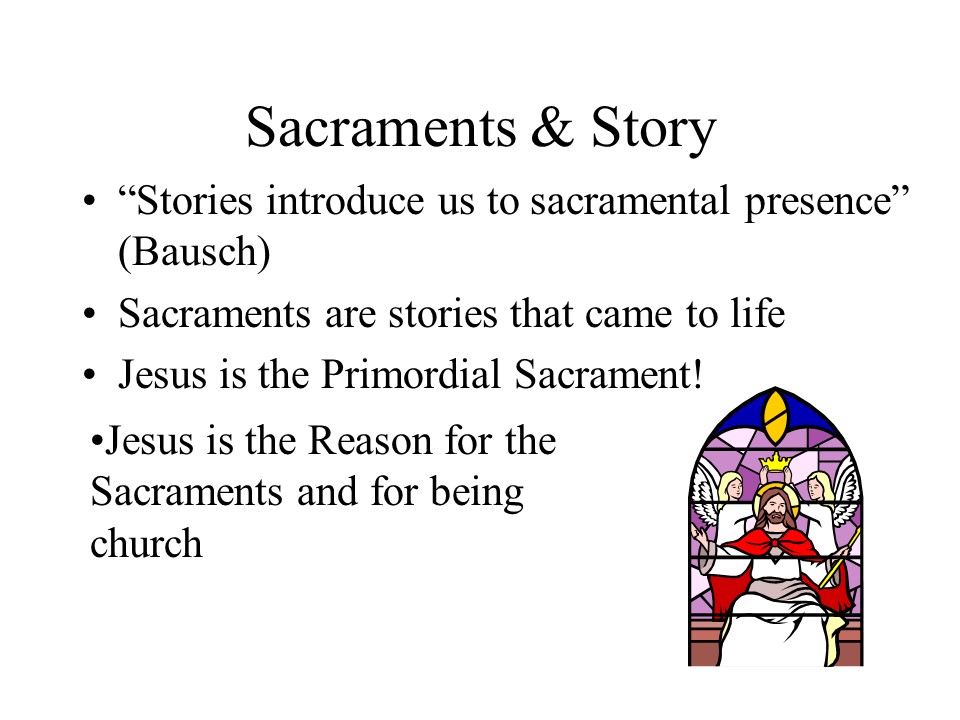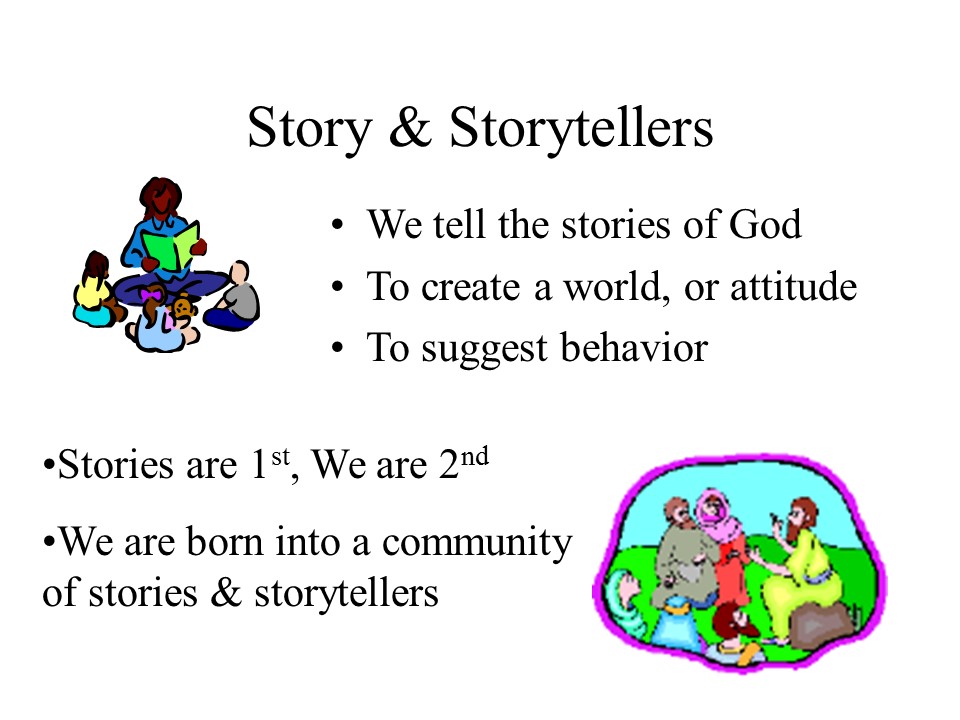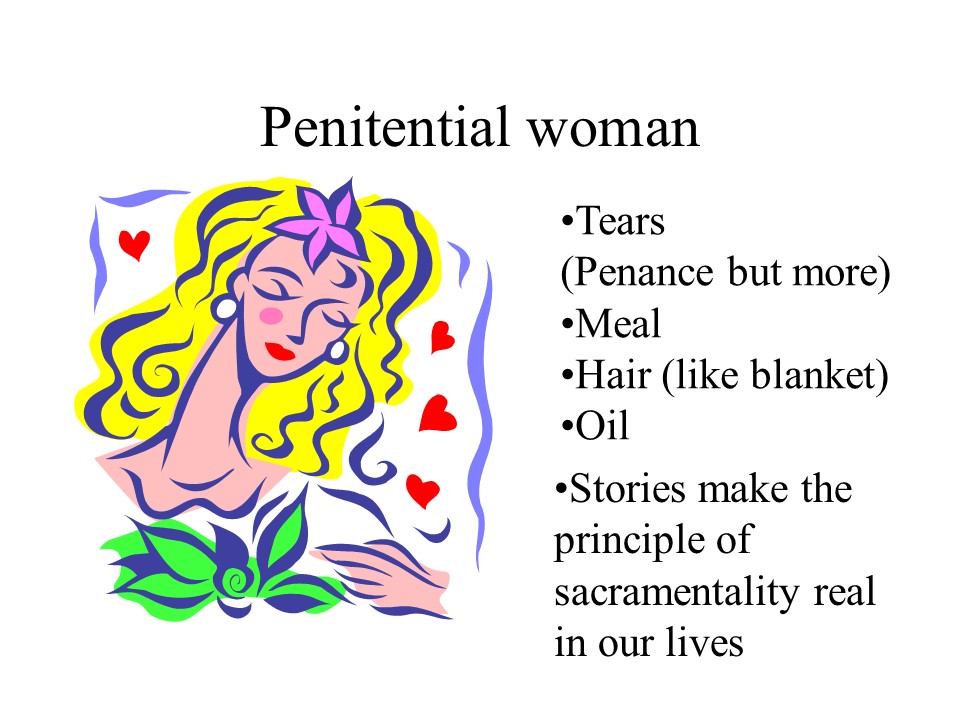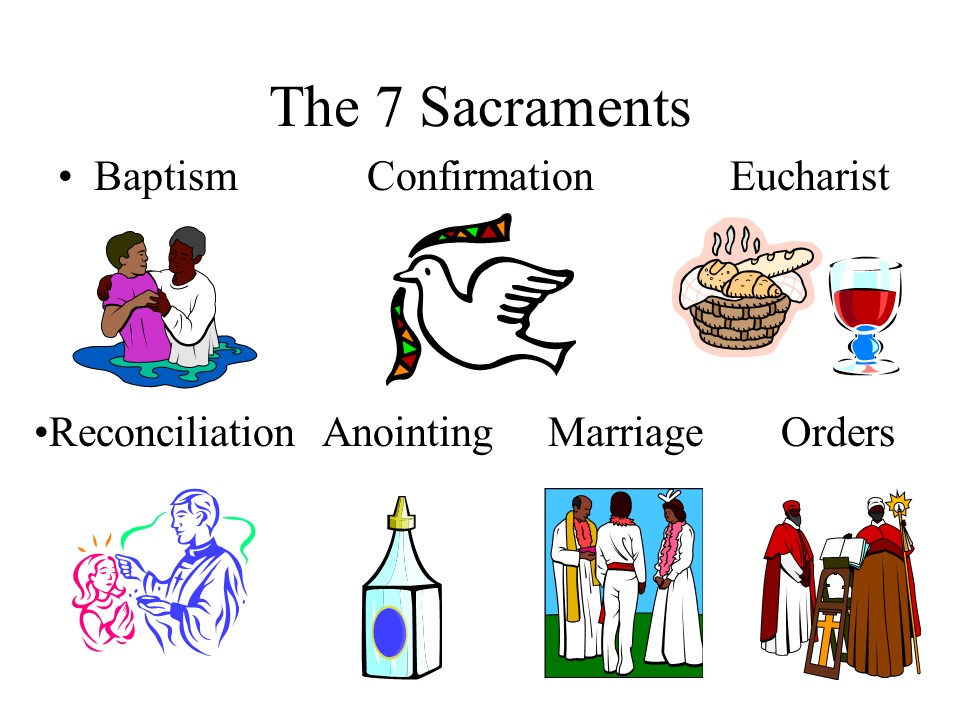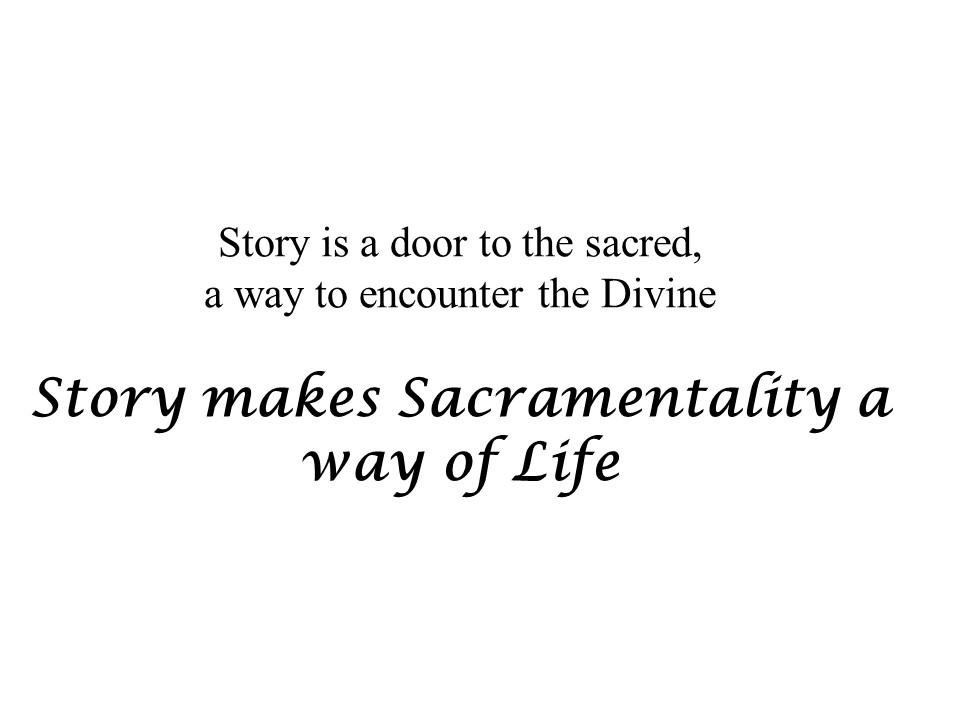"A White Heron" by Sarah Orne Jewett serves as an allegorical background for the vocational call of Reverent Colleen.
The Quiltmaker
The gender of God: God is more than words can say
The language we speak shapes our perception and affects our actions. The way we speak of God affects our spirituality.
ABSTRACT
Our God-Language influences our perceptions of the Divine and this in turn affects our spirituality. Words have power and meaning. Our image of God is directly impacted by the words we speak. Holy Scripture is one place where God-Language is defined, so too is tradition.
The works of many fathers of the church are explored as well as the findings of J. Chittister (1998), J. Clanton (1990), E. Johnson (1992), R. Ruether (1983) and S. Schneiders (1986).
We take a quick look at patriarchy and semantics help to answer the question of why God-Language is such an important topic. Spirituality too is affected by our God-Language. The theme of the incomprehensibility of God and that God is more than words can ever say permeate the work.
INTRODUCTION
A little boy asked a little girl, “What does God look like?” The little girl paused for a moment and replied, “I don’t know, but she’s black.”
Personally, I really like the little girl’s response. For most of my life, I have always heard God referred to as Father. This common referral of God as male and the perception, at least in my cultural experience, that this male God would be of Caucasian extraction is the norm. While it has been almost twenty-five years since I first heard this pun, not much has changed in the way the Divine is spoken about or perceived.
To many of my friends and family members, how one addresses God or the language in which God is described is not a big deal. However experts from the communication field discount that opinion. Stephen Littlejohn (2002) notes that the Sapir-Whorf theory implies that, “The language you speak shapes your perception which affects your actions.” The theory holds true in conversation as well as in all forms of personal communication and I believe it is true in the theological realm as well. The way a person images or perceives God will directly influence actions that the person will take in life.
Language to many people means words. Words are not just letters put together arbitrarily. Words have meaning; they are symbols for things or ideas in the world. Words have power. The words we use to describe or define God have great power in the world. Our image of God will dictate our actions and our behavior. Words become the foundation of our moral choices.
GOD-LANGUAGE EXPLORED
Since words are so powerful, we should be very careful in our ways of speaking of God. When only one category of descriptive words are used to describe or articulate God’s being, God’s magnificence is limited. Using only masculine, personal pronouns to describe God IS a big problem since it perpetrates the belief that God is male. Since no one has seen the Divine, we can only speak of God by way of analogy. Elizabeth Johnson (1992) says:
“If God is essentially incomprehensible, above all names and thought, beyond every ideal and value, a living God! – How is it possible to say anything at all about the divine? When we do dare to speak, what is the import of the names, images, stories, and concepts that are used? …The most esteemed of our relationships and qualities are articulated as words pointing to God” (p. 113).
God is more than words can express; God is beyond our comprehension. Throughout all time, theologians and faithful followers alike have pondered on the magnificence of God. Human minds can not know God; God is ineffable. We humans give many different names to God but in the end God is nameless. We can try to affirm our images of who God is and what God is but nothing we can say is worthy of God. It is easier to say what God is not than to try to articulate what God is. Johnson (1992) notes St. Augustine addressed the incomprehensibility of God when he said:
“If you have understood, then this is not God. If you were able to understand, then you understood something else instead of God. If you were able to understand even partially, then you have deceived yourself with your own thoughts” (p.108).
God possesses every trait and characteristic of both feminine and masculine dimensions. We know in our hearts that God is not female or male, that God is pure spirit. However, knowing this concept does not eliminate the use of the male personal pronoun when speaking of God. According to Elizabeth Johnson (1984) often one hears,
“God is not male, HE is spirit.” This use of the male personal pronoun when referring to God can be attributed to several possibilities. One reason is that the English language has no neutral gender personal pronoun (it refers to a thing not a being) and the second reason could be the concept of generic language.
Generic language according to Verderber (2001) is “using words that may apply only to one sex, race or other group as though they represent everyone”. Included with generic language is the use of the generic he. Verderber defines the generic he as:
“Traditionally, English grammar called for the use of the masculine pronoun he to stand for the entire class of humans regardless of gender. Under this rule, standard English called for such usage as “When a persons shops, he should have a clear idea of what he wants to buy”. Even though these statements are grammatically correct, they are now considered sexist because they inherently exclude females. Despite traditional usage, it would be hard to maintain that we picture people of both sexes when we hear the masculine pronoun he” (p.127).
As one can see from this short exercise in semantics, when only masculine images and words are used in describing God, it is very easy to substitute the generic he concept into our God-Language. Since God is more than words can ever say, this one sided linguistics can cause problems such as idolatry. Ruether (1983) addresses the issue of idolatry by stating:
“It is idolatrous to make males more ‘like God’ than females. It is blasphemous to use the image and name of the Holy to justify patriarchal domination…The image of God as predominantly male is fundamentally idolatrous” (p. 23).
It would be just as idolatrous to portray God with exclusively female images. In that scenario one would be trading one set of problems for another. Thomas Groome (1991) also addresses the issue of idolatry by saying:
“All God-language is analogous and metaphorical. The first commandment forbids ‘graven images’ (Exodus 20:4); to take any image of God literally is idolatrous. … Scripture makes clear that to elevate any one image to be equivalent with God violates the first commandment against idolatry.”
So the words we use to speak of God have far reaching effects. So too it is with the images we personify. Where and how have humans used metaphors and analogies to describe the Divine One? The most logical answer to this question is Holy Scripture. The bible is filled with many names and images for God. However the overriding metaphorical descriptions for God are masculine in nature. This does not mean that God is male. In both the Hebrew Scriptures and the Christian Scriptures God is described with a variety of attributes and images. Many possible images for the Divine are explored – God as Man/Woman (Human Person – Father, Mother, Lover, Widow, Potter, Baker, Shepherd, Farmer), Spirit (Ruach, Pneuma, Wisdom), Creatures – Birds and Animals (Eagle, She-bear) and Inanimate Objects – Light, Fire, Water, Wind, Rock, Shield, Fortress.
As we shall see, words and their meaning bear much on how we understand our world and God. Even our scriptural heritage is flavored by the culturally conditioned society in which it was written. In this paper, the biblical translation that will be used will be the New American Bible (1970) unless noted. Sometimes a comparison between the New American Bible and the Jerusalem Bible will be noted. While the New American Bible is quite familiar to many people due to the fact that it is used for Catholic Liturgy, its context is quite male-oriented and non-inclusive. When a clearer and more inclusive translation is necessary, the Jerusalem Bible (1966) will be cited.
HEBREW SCRIPTURES TRAJECTORY
While the male or masculine images are predominating many places in the Hebrew Scriptures is also spoken of in feminine images. Jann Clanton (1990) gives a marvelous overview of some of these feminine images of God taken from the Hebrew Scriptures. Clanton points out the many and varied images of God, that God is more than Father, King and Lord. “Although human beings have attempted to capture God in masculine term, God continually escapes.” Since the masculine image of God has dominated our language it might shed new insight on the magnificence of God to consider some of the other images of the Divine One.
Perhaps the best place to begin is in Genesis. In Genesis we see God creating the universe, “giving birth”, if you will. The Jerusalem Bible (1966) opens with:
“In the beginning God created the heavens and the earth. Now the earth was a formless void, there was darkness over the deep, and God’s spirit hovered over the water” (Gen. 1:1-2)
HEBREW SCRIPTURES TRAJECTORY
The Spirit of God hovered, “like a bird hanging in the air over its young in the nest” (footnote Jerusalem Bible 1966, p. 15). It is interesting that the Hebrew word for spirit, ruach is feminine in nature. According to Perry (1999), ruach is often described as the breath of God, God’s Holy Spirit. Clanton (1990) picks up on the word spirit and ruach saying,
“Thus we see that the first word for God is Scripture includes the feminine, the first word for Spirit is feminine, and the first picture of God is a mother eagle giving birth to the world. These feminine images for God, given prominence at the very beginning of the Bible, deserve our attention.”
A further exegesis by Clanton (1990) goes on to state:
“The feminine metaphor of God in labor pervades the creation account. The Hebrew word Elohim, used for God here … includes the feminine. Elohim, which is plural in form, seems to be derived from an ancient Semitic female god, Eloah, and a male god, El. This mingling of feminine and masculine forms for God indicates both inclusiveness and transcendence of sexuality.”
The rest of the priestly creation story tells of the creation of the world and everything in it. On the sixth day, God creates human beings, creating them in the image and likeness of God’s self. If the female and the male are created in the image of God, then God’s image and likeness must somehow contain both characteristics of the feminine and masculine. Johnson (1992) states,
“If women are created in the image of God, then God can be spoken of in female metaphors in as full and as limited a way as God imaged in male ones, with talk of feminine dimensions reducing the impact of the imagery.”
Both sexes represent the image the Creator God. Human language that only refers only to the masculine half of God’s creation is a great sin against the Creator. God is more than one tiny image that our language symbolizes.
One majestic image of God is that of an eagle soaring. Many people are familiar with the song, On Eagle’s Wings by Michel Joncas (1979). The first verse and refrain are:
“You who dwell in the shelter of the Lord, Who abide in His shadow for life, say to the Lord, ‘My refuge, my Rock in whom I trust! And He will raise you up on eagle’s wings, bear you on the breath of dawn, make you to shine like the sun, and hold you in the palm of His hands.”
This song is based on Psalm 91. However, as Hill (1997) argues the eagle that is being referred to would have been a female eagle. The mother eagle is larger and heavier than the male; therefore she would be able to carry the eaglets on her body. When it is time for the baby eaglets to leave the nest, she takes them onto her wings and swoops downward, forcing the eaglets off her body. She forces them to fly. The mother eagle stays close at hand, ready to rescue the eaglets if they can not yet fly. She is also there to provide a resting-place when they are too tired to go. It is the female eagle who will bear up the ones who are in need (p. 377). The lyrics of Mr. Joncas song should be feminine instead of masculine; She will raise you up …hold you in the palm of Her hands! According to Jann Clanton (1990), this image of God as the mother eagle is also found in Song of Moses. She cites this passage from the King James translation of the Bible, “As an eagle stirreth up her nest, fluttereth over her young, spreadeth abroad her wings, taketh them, beareth them on her wings, So the Lord alone did lead him…(Deut 32:11). Clanton (1990) implies that God is the One who guides Her children to maturity, nurturing and supporting them when they are weak.
Perhaps the strongest “mother images” of God occur in Isaiah. From the Jerusalem Bible (1966), Yahweh “…groans like a woman in labor “(Is 42:14);
in the New American Bible (1970), “…I [God] cry out as a woman in labor, gasping and panting”. The Jerusalem Bible’s (1966) translation of Isaiah 46, strong maternal images are once again used:
“Listen to me, House of Jacob, all you who remain of the House of Israel, you who have been carried since birth, whom I have carried since the time you were born. In your old age I shall be still the same, when you hair is grey I shall still support you. I have already done so, I have carried you, I shall still support and deliver you” (Is. 46:3-4).
In comparing the translations of the Jerusalem Bible (1966) with the New American Bible (1970) it is easy to see that Isaiah in 49:15, the Israelites are assured that Yahweh will never forsake or forget them. God is likened to a nursing mother, full of compassion and love.
“Does a woman forget her baby at the breast or fail to cherish the son of her womb? Yet even if these forget I will never forget you” (Jerusalem Bible 1966).
“Can a mother forget her infant, be without tenderness for the child of her womb? Even should she forget, I will never forget you” (NAB 1970).
In the closing chapter of Isaiah 66:13, once more the maternal image of God is portrayed, “As a mother comforts her son, I will comfort you.” The prophet Hosea will speak of God with maternal language also.
The Hebrew Scriptures also uses non-human things to draw an analogy of who or what God is like. The Psalms often envision God as a rock, a fortress or place of refuge (Psalm 18:2; 18:31; 18:46; 28:1; 31:2-3; 42:9; 62:2; 62:6-7; 71:3; 78:35; 80:26; 91:2; 92:15; 94:22; 95:1; 144:2). Another non-human metaphor for God is light (c.f. Psalm 27:1, 44:3). These are a but a few of the many and varied ways of imaging the Divine. Many of the other books in the Hebrew Scriptures use non-masculine God-Language. These few examples give assurance that no one image or metaphor can describe God. God is beyond all words, expressions or ideas. God is incomprehensible.
CHRISTIAN SCRIPTURES TRAJECTORY
Jesus in the Christian Scriptures also speaks of God with metaphorical language. Jesus tells many analogical stories of the diversity and greatness of God. In Jesus’ teachings the balance of both the feminine and masculine attributes of God are addressed. Jesus does refer to God with masculine images such as King (c.f. Mt. 22:1-14), Father (c.f. Mt. 21:28-32) and Shepherd (c.f. Lk. 15:3-7). However Jesus also speaks of God with female images. According to Schnieders (1986), Jesus’ dialog with Nicodemus about being “born again” is a feminine metaphor about God and God’s relationship with humans. Here is the passage of John 3:3-8 from the Jerusalem Bible (1966):
“ ‘…I tell you most solemnly, unless a man is born from above, he cannot see the kingdom of God.’ Nicodemus said, ‘How can a grown man be born? Can he go back into his mother’s womb and be born again?’ Jesus replied: ‘I tell you most solemnly, unless a man is born through water and the Spirit, he cannot enter the kingdom of God: what is born of the flesh is flesh; what is born of the Spirit is spirit. Do not be surprised when I say: You must be born from above. The wind blows wherever it pleases; you hear its sound, but you cannot tell where it comes from or where it is going. That is how it is with all who are born of the Spirit”
Nicodemus asked how a person could enter into the maternal womb for a second time. Nicodemus understood the metaphor being used was referring to a feminine attribute that of giving birth. Jesus’ clarification of “being born again” reiterates the metaphorical feminine language. Jesus makes it clear what is human is born of a woman, but what is Divine is born of the Spirit. Jesus even mentions “the wind”. The word for wind in Hebrew is Ruach, which can mean the spirit of God. Schneiders (1986) goes on to say:
“The divine mother of whom believers are born is the one God who is Spirit. Unfortunately, the theological tradition which has controlled the reading of Scripture has insisted on its own male understanding of God to the extent that is has virtually obliterated from the religious imagination this clearly feminine presentation of God the Spirit as mother.”
Again here in the Christian Scriptures we are presented with the image of God as a mother. God is not only the patriarchal father figure so often imagined but God is also the giver of life, the Spirit who causes all things “to be”. The Hebrew Tetragrammaton transliterated as YHWH or I AM or I cause all things to be.
Jesus understood the concept of God as mother quite well. He even presents himself and his ministry as that of a mother hen longing to shelter and cuddle her young under her wings. Jesus’ words taken from the Jerusalem Bible (1966), “…How often have I longed to gather your children, as a hen gathers her chicks under her winds, and you refused” (Mt. 23:37-38, c.f. Luke 13:34-35). Schneiders (1986) suggests that Jesus presenting himself and his ministry in such feminine terms should give credence to the understanding that God is more than the masculine images that are so commonly understood. This passage seems to indicate that Jesus experienced God in more than just masculine terms. Jesus was able to conceive of a Divine Being that is more than human words can ever describe.
Another feminine image of God that Jesus uses often is the tender, merciful forgiveness of God. Being merciful is a virtue that both females and males possess but so often we only image God as the merciful lord of the manor (c.f. Mt.18: 21-35), the father of the prodigal son (c.f. Luke 15:11-32) or the good shepherd who leaves the ninety-nine sheep to find the lost one (c.f. Luke 15:3-7). Jesus balanced these masculine images of a compassionate, merciful God with feminine images of God’s benevolence. Jesus as recounted in Luke’s parable (c.f. 15:8-10), portrays God as the woman housekeeper who has lost one of her ten coins and spends the day searching for it. When the woman finds her lost coin she is ecstatic; she calls in her neighbors to celebrate her good fortune. This parable is very similar to the well-known parable of the lost sheep and the Good Shepherd. According to Schneiders (1986) and Clanton (1990), both these stories show the inclusive love of God in both female and male terms and how only one image that of the masculine, the Good Shepherd is the predominate one. Jesus in these stories is saying that God is like a female as well as a male. Jesus implies that females have as much worth to God as males do. Clanton (1990) maintains that for the Jewish society, which held men in the absolute highest regard and viewed women with such low esteem, this female image of God described by Jesus was quite shocking. Schneiders (1986) comments that, “most Christians readily identify the shepherd as God but do not see the woman as God.” She goes on to say the metaphorical language is understood as, “… the woman is not God and God is not a woman; but it has encouraged us to literalize the masculine metaphor of the shepherd, to think of the man as God and God as man.”
This one sided image of God was never the intent of Jesus. Jesus balanced the images of God in his ministry and storytelling. Jesus also equates God as a baker woman. God’s spirit enters the world as leaven or yeast to make the whole universe “rise”. This metaphorical picturing of God as the woman baking is balanced off by the imaging of God as the sower of the mustard seed, which immediately precedes it (c.f. Mt. 13:31-33).
Jesus did give metaphorical images of God as man and woman, mother and father. Many people will say that Jesus portrays God as Father and that this “Father image” is the most dominant image that Jesus uses in the Christian Scriptures. Some might even say that Jesus’ prayer life gives “indisputable evidence that God is masculine” Clanton (1990) states:
“The prominent place of the Lord’s Prayer in Christian tradition has reinforced this viewpoint. For many people, Jesus’ teaching us to pray, ‘Our Father who art in heaven’ (Mt. 6:9) proves that God is a man. The word here translated “Father” however, is the Aramaic Abba, a babble-word which small children used for their fathers. This is an intimate way of addressing God, a word from the everyday speech of the family.”
Jesus is calling God, Dad (some might include papa or daddy as meanings for Abba). However you might like to translate Abba, Jesus is using an intimate and personal way of addressing the Divine. Abba is not the term one would associate with a dominating, hierarchical patriarchal father, which is the standard image of fatherhood in Jesus’ culturally conditioned society. Jesus is offering a new concept of God and is suggesting a relationship based on intimacy and individual freedom. This concept of relationship is diametrically opposed to the familiar relationship that patriarchy demands. Patriarchy is legalistic in nature, relying on obedience to rules and mores rather than love and compassion. Jesus’ new definition of what “fatherhood” (Abba) means also includes traits that are feminine in nature. Abba is another word for love and embraces the image of mother also.
Clanton (1990) takes the image of “fatherhood” and Jesus’ understanding of this relationship and expands on it. She says,
“…Jesus was not establishing the sex of the Godhead, nor was Jesus supporting the prevailing hierarchy in the families of the patriarchal society in which he lived. On the contrary, Jesus used this ‘father’ symbol in such a way to free people from the clutches of male domination.”
The strong themes of Father and patriarchy have dominated theology for too long. Jesus spoke in symbols that have overtones of femininity yet these images have been overlooked or completely ignored through the centuries. God is neither male nor female and Jesus reminded his followers of this. Once again we are reminded that no one image can contain the magnificence of God. God is more than words or images can say.
Jesus introduced a new and radical image of God and the relationship with the Divine One. His message was so shocking and unorthodox it eventually led to his death. His message of inclusion for all in the Reign of God seemed to have found a home in the first disciples. Included among these disciples were women, e.g. Mary, his mother, Mary of Magdala, Mary, the mother of James and Joses, Mary, the wife of Cleophas, Mary and Martha, Joanna, Suzanne, Priscilla and Junia. The theology of the very early years of Christianity seemed to have been androgynous in nature. While patriarchy was the socially acceptable way of life, the preaching of Jesus seemed to deny it. Schneiders (1986) contends that Jesus invited his followers to a new type of family structure. His followers would become sister and brother and mother. She also claims that Jesus “undermined the accepted definition of humanity and challenged both men and women to conversion. He challenged men to abandon their assumption of male superiority and the grounds on which they based their claims.” Jesus’ revolutionary vision of the worth of women as total equals had never before been addressed. Schneiders (1986) further states that, “the question of whether women could be admitted to full Christian identity and mission through baptism seems never to have arisen despite the fact that there was no Jewish precedent for the religious initiation of women.” This denial of patriarchy and the equality of all in Jesus might have been one reason why women embraced the new religion.
PATRIARCHY AND PATRISTICS
However this utopia of a new order in society would not last for long. Within a few decades the well-known philosophy of male superiority and domination would show its ugly head. St. Paul even seems to have problems with the new order in society. At one point he states: “There does not exist among you Jew nor Greek, slave nor free, male nor female. All are one in Christ Jesus” (Gal. 3:28). Later it seems that Paul, or the author of the letter attributed to Paul, can not let go of the idea of patriarchy when he states:
“A woman must learn in silence and be completely submissive. I do not permit a woman to act as teacher, or in any way to have authority over a man; she must be quiet. For Adam was created first, Eve afterward. Moreover, it was not Adam who was deceived but the woman. It was she who was led astray and fell into sin. She will be saved through childbearing, provided she continues in faith and love and holiness – her chastity being taken for granted.” (1Tim. 2:11-15).
Pagels (1979) states that the letter to Timothy is one of the pseudo-Pauline letters that seem to have be written by another person and attributed to Paul. As one can infer from this pseudo-Pauline passage the idea of male patriarchy and misogyny was becoming firmly established in the early Christian community. This patriarchal viewpoint would influence the God-language of the early Christian community and the image of God as predominately male. Pagles (1979) maintains that St. Paul uses the analogy of God’s authority over Christ as the reason that man has authority over woman. She says that St. Paul cites Genesis 2 when he writes,
“The man is the image and glory of God, but the woman is the glory of man. For man is not from woman, but woman from man; and besides, the man was not created for the woman’s sake, but the woman for the sake of the man.”
This theological equalization of maleness with the image of God was not always accepted in totality by all the theologians of the time. According to Johnson (1984), Gregory of Nazianzus cautioned that no one should be so foolish to think that God is male simply because the word Father is used in prayer and language. Elaine Pagels (1979) comments how Clement of Alexandria, a revered “father of the church”, challenged the standard male image of God so prevalent in his day. She states that Clement integrated his image of God into a true orthodox position, describing God in not only masculine but also feminine terms. Clement wrote:
“ The Word is everything to the child, both father and mother, teacher and nurse… The nutriment is the milk of the father… and the Word alone supplies us children with the milk of love, and only those who suck at this breast are truly happy… For this reason seeking is called sucking; to those infants who seek the Word, the Father’s loving breasts supply milk.”
Clement clearly used feminine images as metaphorical God-language, however being a product of a society controlled by patriarchy it seems that he could not bring himself to call God “mother”. Nevertheless, the implications are clear, God is more than a male person is. God is more than words can say.
St. Ambrose the bishop of Milan, also struggled with the solo masculine metaphorical image for God. According to Clanton (1990) St. Ambrose mixed feminine and masculine images of God to describe God’s magnificence. For Ambrose both the church and God are like a Mother. In the height of the Arian heresy, he emphasized that Jesus is of the same nature and substance of God, “One in Being”. He would state: “Let us beware lest we separate the substance of the hidden nature of the only begotten Son from the bosom of the Father, and from, as it were, His paternal womb.” This influential teacher of the early Christian church did not feel comfortable in using strictly masculine images to describe God. However, we see that feminine images must be cushioned with masculine wording as paternal womb seems to be an oxymoron. However, the implication is clear, God is more than male images will allow.
St. Augustine of Hippo, one of the greatest theologians of all times and one of Christianity’s greatest misogynists, could not completely negate that God through Jesus possessed feminine qualities. St. Augustine’s philosophy of religion held to the tenet that matter was intrinsically evil. He also believed in dualism, meaning that everything in the universe consists on two parts or principles, one good and the other evil. Dualism insists for example that the spiritual soul is pure while the body is corrupt, that men are superior while women are inferior. St. Augustine also struggled with his own human sexuality, the reality of sex in life. He also held an extremely low opinion of women, refusing to believe that women were made in the image of God. According to Clanton, (1990) St. Augustine spent much energy discrediting the contemporary opinion that the Holy Spirit was female. She states that “Augustine’s main objection to the image of the Holy Spirit as female is his repulsion to suggestions of sexuality in God.” She maintains that Augustine thought that by speaking of God with only masculine terms, he could lift God beyond the confines of human sexuality. Despite this overarching view that God is male, “Augustine cannot completely deny the feminine element in the divine”.
Clanton (1990) maintains that Augustine too, uses metaphorical images when speaking of Divine Wisdom and Jesus. The image of the mother hen again surfaces. Augustine says, “Let us put our egg under the wings of that Hen of the Gospel… For that hen is Divine Wisdom: but It assumed flesh to accommodated Itself to its chickens”. Augustine cannot bring himself to use the feminine personal pronoun for God, so he switches to the neutral, non-personal pronoun. Even without saying so directly, Augustine has admitted that God through Jesus does possess feminine qualities. St. Augustine himself stated that God is incomprehensible and so God is. God is more than any words can say and more than any image can portray.
PATRIARCHY AND MIDDLE AGES THEOLOGY (SCHOLASTICISM)
As Christianity grew throughout the centuries so did the idea of masculine God-language. Almost all official church documents refer to God with the male personal pronoun, He. St. Thomas Aquinas again said that all human descriptions of God are inadequate. In his famous work, Summa Theologia, Aquinas (1952 trans.) said that it is impossible to see or understand the essence of God by using any created thing or likeness. “God is beyond naming because his essence is beyond what we understand of him and the meaning of the names we use. Clanton (1990) contends that while Aquinas made a true statement about the incomprehensibility of God, he did not see that the use of the male personal pronoun did in fact cause a concrete image of God. Aquinas had a hard time bringing himself to refer to God with feminine images. Rosemary Ruether (1983) in accordance with others discloses Aquinas’ misogynist tendencies. Aquinas believed being born female was a defect in nature; that a woman was an inferior being. He based his conclusion on the Aristotelian definition of woman as a misbegotten male. Ruether states Aquinas’ position as: “She is inferior in body (weaker), inferior in mind (less capable of reason), and inferior morally (less capable of will and moral self-control)” (p. 96). Aquinas (1952 trans.) himself stated in Summa Theologica, Question 92 that:
“For the philosopher says that ‘the female is a misbegotten male.’ But nothing misbegotten or defective should have been in the first production of things. Therefore woman should not have been made at that first production. … But woman is naturally of less strength and dignity than man, for the agent is always more honorable than the patient. … As regards particular nature woman is defective and misbegotten for the active force in the seed of the male tends to the production of a perfect likeness in the masculine sex, while the production of woman comes from defect in the active force or from some material indisposition, or even from some external change, such as that of the south wind… "(p. 489).
With this type of philosophical view of women and femininity it would be impossible for Aquinas to posit any female attributes to God. For Aquinas, God was perfection and pure act. God could not possibly possess female qualities since females are imperfect models of humanity. While Aquinas’ view of women was the majority view in society at the time, it was not the only viable one. Some of the mystical writers of the Middle Ages had a more balanced view of females and their role in imaging God.
In some of the devotional literature of the Middle Ages, the maternal imagery of God was once again portrayed. A union with God was an underlying concept in some of the mystics who wrote at this time. One of these mystics was St. Anselm of Canterbury who spoke of God as a supreme Spirit, one who transcended a corporeal body. In God as in Christ there was no distinction of sex. According to Clanton (1990) and Johnson (1992), Anselm conceded that in the Bible God and Christ are referred to with feminine nouns like Wisdom and Truth. His prayer to Jesus as Mother and Savior reveals great insight into the understanding that God is more than human images can contain. Anselm prays:
“…Good Jesus, are you not also a mother? Are you not a mother, who like a hen who gathers her chickens beneath her wings? …And you, my soul, dead in yourself, run under the wings of Jesus your mother and lament your griefs under his feathers. Ask that your wounds may be healed and that, comforted, you may live again. Christ, my mother, you gather your chickens under your wings; this dead chicken of yours puts himself under those wings… Warm your chick, give life to your dead one, justify your sinner”.
Again the maternal image of God is presented. God, through the person of Jesus Christ, is the loving parent who gives life to the child. The image of this parent can be either mother or father. The sex of the parent does not matter but what does is love beyond all measure. St. Anselm of Canterbury was able to transcend the culturally conditioned image of God as male entity to offer this enlightened prayer.
Another mystic of the Middle Ages was Julian of Norwich. She was a recluse for many years living in a cell adjacent to a church. In her mystical prayers, she envisioned the Trinity in a new light. According to Clanton (1990), Julian explains her vision of the all-inclusiveness of God while maintaining the unity of the Godhead:
“As verily as God is our Father, so verily God is our Mother; and that shewed he in all, and especially in these sweet words where he saith: I it am… the Might and the Goodness of the Fatherhood; I it am, the Wisdom of the Motherhood; I it am, the Light and the Grace that is all blessed Love; I it am, the Trinity…I it am, the endless fulfilling of all true desires.”
Clanton (1990) goes onto say that Julian switched from using the masculine personal pronoun, “he” to using the non-personal neutral “it” to show that God is beyond the limitation of gender. Medieval God-language did try to address the one sided image of God. While it was limited mostly to maternal images, it still was an attempt to lessen the over masculinization of God. As we have seen before, no one image can contain the essence of God because God is more than words can say.
CULTURAL INFLUENCES OF GOD-LANGUAGE ON SOCIETY
As we have seen, culture cannot be separated from language and linguistics. Spoken language is culturally conditioned; it evolves in a specific time and place due to the symbolic needs of a culture. Masculine God-language developed through time in a patriarchal and androcentric dominated culture. Patriarchy is often referred to as male domination in society. While this definition is correct the first meaning of patriarchy has to do with being the head of a family, clan or tribe. The chieftain is known as the patriarch of the family. Patriarchy is relationship of first-born or eldest son to the patriarch. In a true patriarchal setting, only the patriarch and the eldest son hold any place of honor; all other males are under the domination of the patriarch. Androcentrism means male or man centered. When these two models of social structures are combined the culture that ensues can be called androcentric patriarchy. Androcentric patriarchy might be one of the main reasons for the non-inclusive, male-dominated God-language of which we are addressing.
Recall the Sapir-Whorf hypothesis, “The language you speak shapes your perception which, affects your actions.” When one looks through the culturally conditioned history of Western Civilization it is quite easy to see how the Sapir-Whorf hypothesis applies. We have already seen that St. Thomas Aquinas viewed the female as a defective entity, a misbegotten male. The Jewish philosopher and theologian, Philo of Alexandria, also viewed the female as an evil being, sensual, irrational and passive. Johnson (1992) quotes Philo as saying:
“For pre-eminence always pertains to the masculine, and the feminine always come short of it, and is lesser than it. Let us, then, pay no heed to the discrepancy of the gender of the words, and say that the daughter of God, even Sophia, is not only masculine but father, sowing and begetting in souls aptness to learn, discipline, knowledge, sound sense, and laudable actions (p. 98)”.
Philo with his own words negates the possibility of speaking of God with any words other than male images. For Philo the spoken words convey the essence of God. If the words you speak, influence your perception then Philo words say that God is male. He proves this by his actions, writing his thoughts out. Philo’s insistence on such a theology can be attributed to his culturally conditioned society. The Sapir-Whorf theory is aptly expressed in Philo’s behavior.
Other great theologians held misogynist feelings. Jann Clanton (1990) recalls how Tertullian called women, “the devil’s gateway”. That Origen claimed that males are more like God than women because males are more spiritual and that women are more driven by the flesh thereby antithetical to God. She contends that St. Augustine denied that women were made in the image of God. St. Augustine (1962 trans.) states:
“In what sense, therefore, are we to understand the Apostle, that the man is the image of God and consequently is forbidden to cover his head, but that the woman is not, and on this account is commanded to do so? … I already said, …that the woman together with her own husband is the image of God, so that the whole substance may be one image. But when she is assigned as a help-mate, a function that pertains to her alone, then she is not the image of God. But as far as the man is concerned, he is by himself alone the image of God, just as fully and completely as when he and the woman are joined together into one (p. 352)”
Ruether (1983) argues that St. Jerome also was a misogynist. He states that the only good thing about marriage is that Christian virgins are born of the union. These virgins can then “aspire to a higher life that had been lost by the ignominious mothers” (p.143). These theologians lived in the first centuries of Christianity, however their views have had long lasting implications.
Androcentric patriarchy continued to grow and dominate society. The scholasticism of the Middle Ages expanded on the beliefs already prominent is the androcentric, culturally conditioned society. This historic time period produced other misogynist theologians besides St. Thomas Aquinas. St. Bonaventure said that women were vomit and were to be avoided. Subjugation was “the natural order” of the world. God had created the world and its social structure so male domination was pre-ordained. Ruether (1983) claims that with Martin Luther and the Reformation, a slight modification was made to androcentric theology. Luther stated that women, through the sin of Eve and the ensuing punishment, lost the equality that females had shared with males. That is why women were inferior in mind and body and must be subjected to males. Male domination was the punishment for the first woman’s sin and to protest or complain was to refuse to accept God’s judgement. Ruether (1983) claims that Luther said:
“This punishment too springs from original sin; and the woman bears it just as unwillingly as she bears those pains and inconveniences which have been placed upon her flesh. The rule remains with the husband, and the wife is compelled to obey him by God’s command… In this way Eve is punished” (p. 97).
Luther based his theology of male domination on his perception that God had meant that all women should be punished for Eve’s indiscretion and any action contrary to this theology is sinful. His perception influenced his language, which affected his actions.
Androcentrism and patriarchy not only reigned in theology and religion but in every facet of life. This is because society is culturally conditioned. Male superiority reigned in language especially. According to Thomas Groome (1991), the English grammarian, Thomas Wilson, reflected the first argument for male domination and superiority in written and spoken English in 1553. Wilson contended that “men should always be named ahead of women and with primary status, for example as in ‘man and wife’, because of males ‘natural supremacy’”. In 1646, grammarian Joshua Poole argued for “pride of place” for males in language because “the male gender is the worthier one”. In 1746 grammarian John Kirby introduced the ‘generic he’, because “male gender is more comprehensive than female and because its superiority as the norm of humanity should be reflected in its language”. The generic he became the legal norm when in 1850 the English Parliament decreed that “henceforth, “he” legally stands for “she”.
Another historic event took place during these centuries. England became the dominant world power and by the close of the 1800’s, England ruled the world. The saying, “The sun never sets on the British flag” was quite true. The fact that English was spoken around the globe and that British culture was practiced everywhere would help to solidify androcentric patriarchy. Now cultures were not only exposed to socially conditioned male domination (e.g. ancient customs, myths, religious practices, etc) but the fact that the English language legally gave males the place of prominence was indisputable. Women that had been subjugated in society were now excluded in written and spoken language. The Sapir-Whorf theory, “The language you speak shapes your perception which, affects your actions” was becoming concretely clear. Women were less than males; they were a non-entity. The spoken language of English negated a great portion of woman’s existence.
Jann Clanton (1990) shows how androcentric, patriarchy has affected men. She quotes the angry response of one man who acknowledges his own androcentric view of God. He was angry because she had included female word references for God, implicating that God could and should be referred to as “She” as well as “He” and “Mother” as well as “Father”. The man said that,
“I would feel angry – insulted – God is a male. Jesus said if you have seen me you have seen the Father. Women should be flattered to be feminine, and I don’t think that they would want to be God”.
Clanton (1990) goes on to say that the man most likely did not realize that he was deifying himself and other men. With his culturally conditioned upbringing “he had made the ultimate reversal: God is male; thus male is God.”
No wonder such an outlandish generalization such as this could be made. For generations, androcentric theology had been taught. It stated that males are more in the image of God than females. St. Augustine, Philo, Tertulluin, and St. Thomas Aquinas upheld this theology. Androcentric patriarchy was (and is) a social evil. Thankfully, it has been exposed for what it rightfully is, a sin. Today it is known as the sin of sexism. As with all sin, this one should be avoided. God did not intend for one sex to dominate the other but to complement and complete the image of God in creation.
EFFECTS OF MALE GOD-LANGUAGE AND WOMEN'S SPIRITUALITY AND SELF-ESTEEM
So far we have looked at language and semantics and how our words affect our perception of God. We have considered how the context of our language evolved in a society that is culturally conditioned. We continually reaffirmed that God is more than words can say and that no one image can contain the magnificence of God. So what was the purpose in all this exploration? Many times people will say, “Why get so worked up about this topic, it is only words. Every one knows God is not really male.” However there is a bonafide reason for addressing our God-Language. Remember the Sapir-Whorf theory of language? In light of the Sapir-Whorf theory let us consider the little girl who wrote a letter to God. This letter is quoted in Clanton’s (1990) book,
“Dear God, are boys better than girls? I know you are one but try to be fair.”
If our perception is shaped by the words we speak, then this little girl’s assumption is correct. She perceives that God is male and that being male is better than being female. Her culturally conditioned society has told her so. The language she hears everyday continually reinforces such an impression. Almost everything she hears is from a male perspective, even God is continually referred to as He. The actions of society bear out this perception. In the Orthodox and Roman Catholic traditions, only men can be ordained to priesthood. Orthodox Judaism prohibits women from becoming Rabbis. Many other Christian denominations and Conservative Judaism still frown on women in the clergy. The actions of society are clear, males are seen to be more like God than females. This little girl feels alienated and devalued. She appeals to the One who she has been taught loves everyone beyond measure. But how can she be sure of the answer, for if God is male, might the male God then value the masculine creatures more?
Ida Raming (1999) addresses how androcentric God-Language affects women and their spirituality. Raming cites the negative consequences that male God-Language might have on a woman’s sense of self-worth and self-esteem. She says;
“The religion of the Father, oppressive to women only because of their sex, subjects them from childhood to representational images which, may awake in them feelings of invalidity, inferiority and even of negativity.”
She also adds that with such a negative perspective of one’s self it is easy to see why some women may never reach their full potential in maturity and why some women may never try to become fully mature adults.
Priscilla Pope-Levision (1992) also addresses how the sin of sexism has affected women and their spiritually. She contends that the major sin in society is pride. She sees pride as the desire to grab and hold power over others. According to her, men often are guilty of the sin of pride because they “usually contribute to systemic social sin as monopolizers of power and privilege”. Women usually are not guilty of pride but are guilty of another sin, that of self-depreciation. Pope-Levison believes that women sin by the constant “underdevelopment or negation of the self.” She says that women’s passivity contributes to the social sin of sexism because women refrain from becoming involved with growth and responsibility in society. In this way, a woman does not have to grow and change to become the mature individual she was meant to be. Passivity can lead to stagnation and arrested growth. Patriarchy with its emphasis on subordination encourages women to stay in a childlike world were they never have to grow up.
Chittister (1998) agrees with the premise that patriarchy limits women’s growth. She says patriarchy minimizes, trivializes and marginalizes women by keeping them held hostage. Women are “eulogized for staying in their proper places, for being sufficiently docile and properly deferent, but they are also degraded by the false protectionism, veneration, paternalism and denigration that such a system offers.” Chittister further states that, “In a patriarchal society, females can be children, daughters, girls, ‘little wives’ and mothers but never independent, self-sustaining, totally developed women, adults”. Females, under patriarchy, never have to “grow up”; they never have to mature into adulthood.
Emotional immaturity often means spiritual immaturity. Humans are integrated beings. If one area of a person is developmentally delayed it is almost certain that other areas are also affected. Since women live in a society where men are consistently held in higher esteem than women do, it is quite easy to see how a woman’s relationship with God could suffer. Chittister (1998) argues that androcentric patriarchy with its overemphasis on the maleness of God has generated a spirituality that is deficient. Since males have controlled the study and writing of theology, women’s spiritual needs have been pushed aside. She reasons that,
“The theology written by men has been written from the perspective of male questions, male concerns, male priorities, male pressures. What interests men, troubles men, affects men, concerns men has dominated religious thought and practice since the beginning Christianity.”
Since spirituality has constantly been promoted from the masculine perspective, where do women’s experiences fit in? How can women develop a spirituality that will address their God needs?
Clanton’s (1990) research suggests that feminine God images and feminine God-language is the best place to start. She says that, “Many women feel a deep-down sense of affirmation when they hear feminine references to God. They feel strengthened and empowered.” She further states that the way women envision and speak of God affects their level of self-confidence and creativity. She says that women who “open their minds and spirits to the diversity and expansiveness of God, … unlock the treasure of creativity deep within themselves”. Ida Raming (1999) concurs with Clanton’s theory that metaphorical language and feminine images of God will aid women in the spiritual journey. She said that the words of Pope John Paul I, “God is our Father; what is more, he is also a mother for us!” gave hope to all. She implied the change in language would also aid in spiritual growth. She is most likely correct. For women’s spirituality to grow, they will need a change in their perceptions of who God is for them. Pope John Paul I once again showed the Sapir-Whorf theory in action. His action of proclaiming God as mother was influenced by his perception that God is more than Father, indeed God is more than words can say.
CONCLUSION
So, the little boy still wants to know, what does God look like? The little girl still can’t answer accurately because as we have talked about in this paper, God is more than words can ever say. However, since God is more than words can say, we should stop limiting who God is by our culturally conditioned, androcentric language! A wonderful professor from the field of communications, several times has said, “The things we value most in life, we give lots of names to” (C. Frey-Hartel, Interpersonal Communication Lectures, Spring 2002). Since God should be the most important entity in everyone’s lives, doesn’t it follow that God should have many, many names. Women and men need to know that God is everything a human being needs or wants and more besides. No human mind will ever completely understand the mystery that is God. All our words, analogies, metaphors and symbols are inadequate. No image can contain God.. After all, God IS MORE THAN WORDS CAN SAY and She always will be!
REFERENCES
Aquinas, Thomas. (1952). The Summa Theologica Volume 1 (Robert Maynard Hutchins, Editor). Chicago: Encyclopaedia Britannica.
Augustine. (1963). The Fathers of the Church, Saint Augustine - The Trinity. (Stephen McKenna, Trans.). Washington, D.C.: CUA Press.
Chittister, Joan D. (1998). Heart of Flesh, A Feminist Spirituality for Women and Men. Grand Rapids, MI: Eerdmans Publishing.
Clanton, Jann A. (1990). In Whose Image? God and Gender. New York: Crossroad.
Groome, Thomas H. (1991). Language for a “Catholic” Church. Kansas City, MO: Sheed & Ward.
Hill, Brennan R., Paul Knitter and William Madges. (1997). Faith, Religion and Theology. Mystic, CT: Twenty-Third Publications.
Johnson, Elizabeth A. (1984). The Incomprehensibility of God and the Image of God: Male and Female. Theological Studies, 45, 441-465.
Johnson, Elizabeth A. (1992). She Who Is. New York: Crossroads Publishing.
Joncas, Michael. (1979). On Eagles Wings. New Dawn Music.
Jones, Alexander. (ed.). (1966). The Jerusalem Bible. Garden City, NY: Doubleday.
Littlejohn, Stephen W. (2002). Theories of Human Communication. (7th ed.). Albuquerque, NM: Wadsworth.
Pagels, Elaine. (1979). Womanspirit Rising. New York: Harper & Row.
Perry, John Michael. (1999). Exploring the Evolving View of God. Franklin, WI: Sheed & Ward.
Pope-Levison, Priscilla and John R. Levision. (1992). Jesus in Global Contexts. Louisville, KY: Westminster/John Knox Press.
Raming, Ida. (1999). Lumen Vitae, Revue Internationale de Catechese et de Pastorale. ( Joanne Waller, Trans.). www.womenpriest.org.
Ruether, Rosemary Radford. (1983). Sexism and God-Talk toward a Feminist Theology. Boston: Beacon Press.
Saint Joseph Edition. (1970). The New American Bible. New York: Catholic Book.
Schneiders, Sandra M. (1986). Women and the Word. Mahwah, NJ: Paulist Press.
Verderber, Kathleen and Rudolph F. Verderber. (2001). Inter-Act, Interpersonal Communication Concepts, Skills and Contexts. (9th ed.). Belmont, CA: Wadsworth.
Image: "Male female intersex communication" by Serge Lachinov in 2011
METHODOLOGY
In reflecting on this article, two models of contextual theology seem to be the overriding principles. The two models are the Anthropological and the Synthetic. The basic theological orientation is Creation-centered and the paper does meet the criteria for Orthodoxy.
The Anthropological method is the more prevalent model because it focuses on culture as one of the main reasons for the formulation of God-Language. As Bevens (1992) claimed this model
“…recognizes that revelation is not essentially a message, but the result of an encounter with God’s loving and healing power in the midst of the ordinariness of life”(p. 52).
Since language is a culturally conditioned by-product of society, theology is greatly influenced by the words that are spoken. This model affirms that the world is holy place and that everything that God is good and holy as God is holy. Sometimes this model is criticized for not appealing to scripture and tradition for the formulation of the theology being advocated. This paper uses scripture and tradition extensively, citing where each has contributed positively and negatively to the culture’s use of language in regards to its theology.
Another model of contextual theology used is the Synthetic model. The topic of the gender of God was looked at from a couple of different viewpoints. Both Catholic and Protestant theologians were consulted. Women and men opinions on cultural language biases were also cited and validated. How different cultures and historic times were addressed as to reasons for the development of God-Language and the problems that come with culturally conditioned behavior and linguistics. One of the strengths of this model is that it witnesses to the universal message of Christianity and God. Over and over in the article, this message that God is more than words can say comes through loud and clear. The article also speaks of the fact that throughout the ages many people have tried to define God with restrictive language and images but God continually escapes finite methods of linguistics.
While these two models are primary to the theology that was used, another secondary factor influenced the methods used. This secondary factor is that of the orientation of the method. This article is written from the Creation-centered orientation which according to Bevens (1992),
“… is characterized by the conviction that culture and human experience are generally good…sees the world as sacramental…Revelation does not happen in set-apart, particularly holy places…It comes in daily life, in ordinary words, through ordinary people” (p. 16).
The Creation-centered orientation is quite easy to discern when reading this article. Many scriptural references are made to the creation story and more than once the human condition is referred to as being worthwhile and holy.
Finally this article does fulfill the criteria for Orthodoxy. The three major criteria for orthodoxy have been met. This article meets the first requirement – the proposed theology should be orientated in the same direction as other approved formulations. The thesis of the article is that God is more than words can ever say and God is ineffable. The second criterion states that orthopraxis must follow from the theology being advocated. Again the article advocates that language can help or hinder in worship and spirituality of individuals and therefore it is imperative that one’s God-Language is accurate. Inclusion of all is one of the tenets of the Gospel message and to be exclusive of others due to linguists is being unorthodox in practice.
The third and final criteria are reception of the theological formulation by the community of believers. Throughout the ages, small but significant numbers of believers have proposed the same theological perspective that this paper articulated. Changes for inclusive language has been called for by many in the faith community. The article does meet the third step for orthodoxy.
In the conclusion, this article is from the human perspective (Anthropological Method) that consults other viable sources (Synthetic Model) to formulate a theology of God-Language and spirituality that is open and inclusive to both men and women. This theological formulation is Orthodox in theory and Creation-centered in orientation. The article is constructed with strong contextual components that highlight many features of the two models employed.
Sacraments are Stories Come to Life
Jesus as the Prime Sacrament
This Powerpoint presentation shows how all seven sacraments are built upon the solid rock of Jesus Christ.
Sacramentality and Story
This Powerpoint presentation shows how sacred thinking and story tie together.



